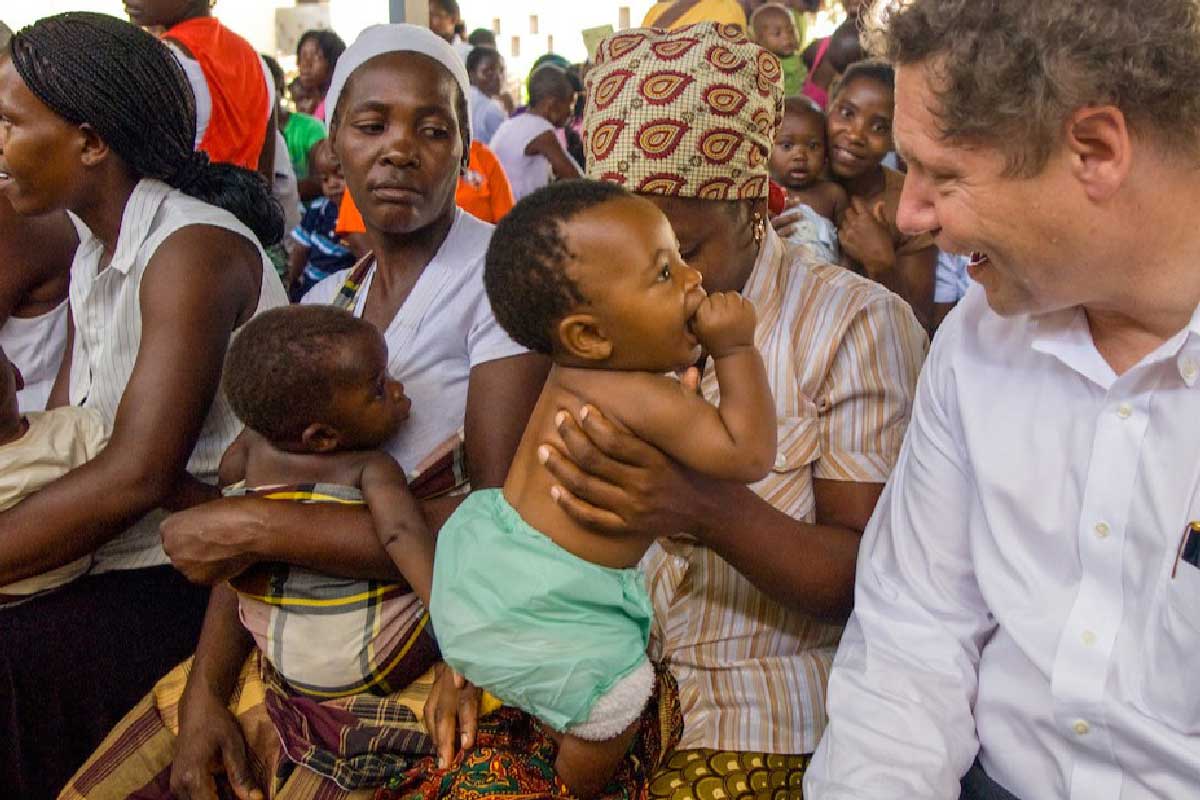China, India, Brazil: Learning from the pathfinders
As different regions and countries focus on developing or strengthening their vaccine industries, I wondered how some emerging economies successfully expanded their vaccine manufacturing capacities over the years.
- 13 October 2023
- 7 min read
- by Pascal Barollier

As different regions and countries focus on developing or strengthening their vaccine industries, I wondered how some emerging economies successfully expanded their vaccine manufacturing capacities over the years.
The recent pandemic has been an accelerator of political will across the globe, demonstrating the strong need for diversifying regional manufacturing of vaccines as a critical factor in global health security, sustainable vaccine supply and resilience to the multiple health impact of climate crises.
The African Union through Africa CDC has now set the ambitious goal of reaching 60% of Africa's vaccine needs produced on the continent by 2040. Achieving this ambitious goal will require a coordinated, collaborative effort and long-term strategic planning to create the enabling environment to achieve this vision.
Here are some key findings and key learnings from these pathfinders.
The case of India
India's vaccine manufacturing has seen significant changes since the beginning of the 20th century and provides an example of how both public and private efforts contributed to the development of a vaccine industry that meets both regional and global needs. Today, Indian vaccine manufacturing constitutes a third of the global vaccine market by volume and a key aspects of its success lay in the creation of a framework for the entire value chain backed up by strong political will, investments in science and education and critical partnerships with multilateral organisations such as the United Nations Children's Fund UNICEF.
Launched in 1978, India's "Expanded Programme on Immunization" was renamed in 1985 as "Universal Immunization Programme" when it was expanded beyond urban areas. This expansion was accompanied by strong efforts to improve the country's vaccine production and manufacturing of cold chain equipment. In 1986, immunisation was designated as one of the five National Technology Missions, and the Department of Biotechnology was established to prioritise developing human resources, appropriate infrastructure, research and development, and regulatory frameworks. This helped India become self-sufficient in manufacturing of all vaccines, except for the oral polio vaccine (OPV), by 1991.
Likewise, demand generation was vital to incentivise the development of the vaccine manufacturing industry. Vaccine manufacturing in emerging markets have historically been more focused on markets in developing countries. Manufacturers in India looked to these markets to match demand and maximise profit, and worked to upgrade technology to meet the local and World Health Organization prequalification (WHOPQ) regulatory requirements in order to contribute to the global United Nations-driven supply of vaccines. Serum Institute of India Pvt. Ltd. for instance partnered with the WHO and PATH in 2002 to develop a vaccine for the African meningitis belt countries.
The private sector also invested in creating capacities in not only older vaccines but also in newer ones where the public sector did not enter, enabling them to meet new global needs. Three vaccine manufacturers in India readied the vaccines for global use against the H1N1 virus pandemic in a record time of 9 months, which is a testimony of how developing country manufacturers' can be leveraged to undertake vaccine development against pandemics.
The case of China
China has also attached great importance to policy development and consistent update of its regulatory processes to boost the development and quality of its vaccine manufacturing industry. The country adopted a two-category system approach to strike a balance between public health needs and commercial viability for its nascent vaccine manufacturers. The first category includes traditional vaccines provided free of charge by the government to citizens, such as those included in China's national immunisation programme. These have lower costs, achieved in part through large demands in an economy of scale, to prioritise meeting short- to medium-term public health needs at a given budget. Vaccines assigned to the second category are those that are paid by the citizens and generate higher profit margins.
Have you read?
The Chinese government has continuously updated its vaccine regulatory system to maintain a steady improvement to quality control. Between 2011 and 2020, the country has established or updated 22 major regulations and guiding principles on vaccine regulations, 11 of which relate to management of vaccine production and operation, clinical trial quality requirements, management in the field of vaccine circulation and transportation, and monitoring of vaccine adverse reactions.
The Chinese government has also prioritised the improvement of its own regulatory system. National regulators are responsible for establishing standards and preparing reference materials as well as for carrying out testing of vaccine products against legal standards. Provincial regulators on the other hand are required to conduct full testing of vaccines produced by private manufacturers within its administrative region.
China further implements "vaccine lot release" management – a system of mandatory inspection and audit when each batch of products leave the factory for marketing or import – that is listed by WHO as one of the key regulatory functions of governments. The latest update to the system was made as recently as 2020, and included standardising and refining the operational requirements for lot release, strengthening risk management and supervision and inspection processes, and clarifying on the responsibilities of marketing authorisation holders.
In 2013, China's National Institute for Food and Drug Control (NIFDC) further joined the WHO Collaborating Center (WHOCC) to contribute to the standardisation and evaluation of biological products of the WHO, in turn paving the way for its vaccines to enter the international market.
The case of Brazil
Brazil's National Immunization Program (NIP) is a good example of a comprehensive immunisation programme that has progressively achieved high coverage rates. NIP's success was built upon a series of converging government policies that encouraged the development and strengthening of its vaccine manufacturing industries in the public sector.
After Brazil's successful mass immunisation campaigns to eradicate smallpox between 1966 and 1973, public perception shifted significantly towards supporting a "culture of immunisation" in the country. Building on this momentum, the Brazilian government established a number of public sector new vaccine manufacturing facilities across the country, including federal institute for vaccine manufacturing, called Bio-Manguinhos, at the Oswaldo Cruz Foundation, as well as the Butantan Institute, and Ezequiel Dias Foundation.
In 1988, the Brazilian government established a new Constitution that made universal access to vaccination free of charge and a civil right. A series of policies were also instituted that strengthen the NIP and meet demands. These policies focused on advancing innovation, supporting producers' technological development and production capacity, strengthening national systems for quality control and assurance as well as epidemiological surveillance, and improving NIP's own operations and implementation.
Significant attention has been put into identifying new vaccine candidates, supporting centres for research excellence, building new and strengthening existing laboratory and clinical infrastructures, as well as establishing practices and norms that meet international standards and accreditation criteria. These policies have successfully positioned public vaccine manufacturers as critical players to support NIP and Brazil's National Health System, supplying over 90% of vaccines purchased by the NIP.
In addition to this focus on the internal market, Brazil's manufacturing industry is expanding its participation in the global market. While the majority of global vaccine production is concentrated in a few multinational corporations, there is an increasing participation of manufacturers from developing countries, including Brazil, in the global traditional vaccines market. The Brazilian facility Bio-Manguinhos, for instance, is prequalified by WHO to export yellow fever vaccines through international organisations, including through UNICEF and the Pan-American Health Organization (PAHO) Revolving Fund/WHO.
Conclusions
The context of vaccine markets and domestic conditions for incentivising nascent industries is of utmost importance to translate vaccine research, development, and innovation into solid infrastructure and dedicated industrial parks.
Predictable demand, supported by an enabling policy framework, skilled human capital, and strong regulatory processes, are key to sustainably expanding vaccine manufacturing in emerging economies, and to meet the public health and health security needs of regions.
The experience from countries that have successfully built their domestic vaccine manufacturing industry could provide valuable insights for other emerging economies.
The examples of India, China and Brazil suggest some key practices that could be applicable in other regions, namely the need for strong and sustained political will, a coherent policy framework with clear division of labour and responsibilities, a regulatory framework that incentivise technological development and local capacity building, as well as establishing practices and norms that meet international standards.
Website
This article was originally published on Pascal's LinkedIn on 13 October 2023.









